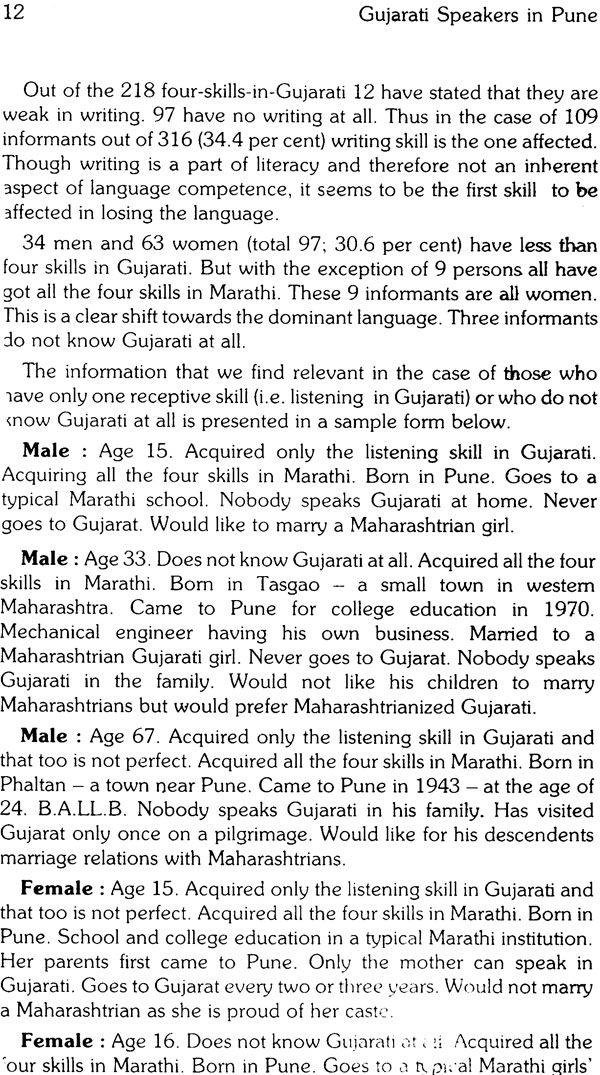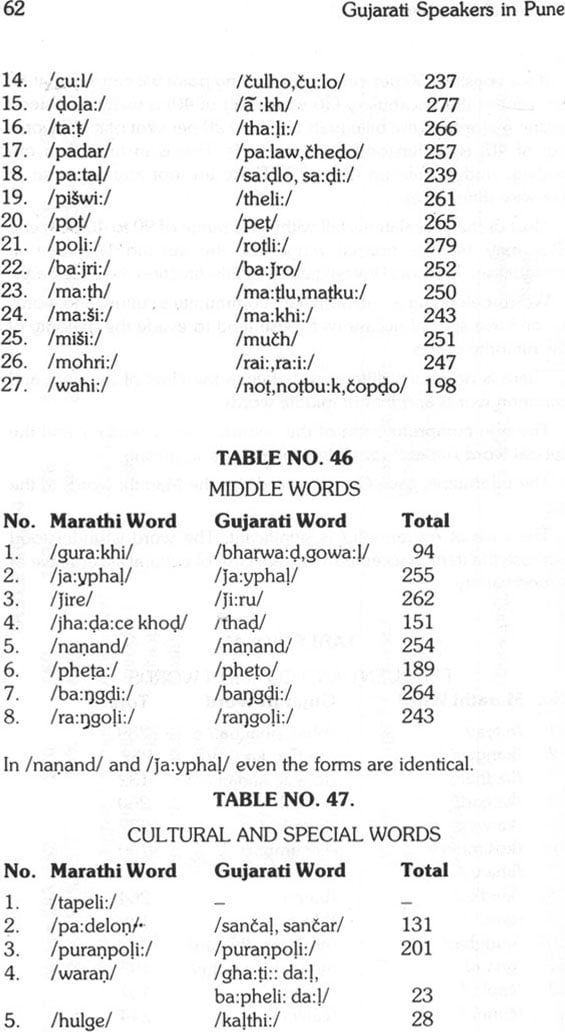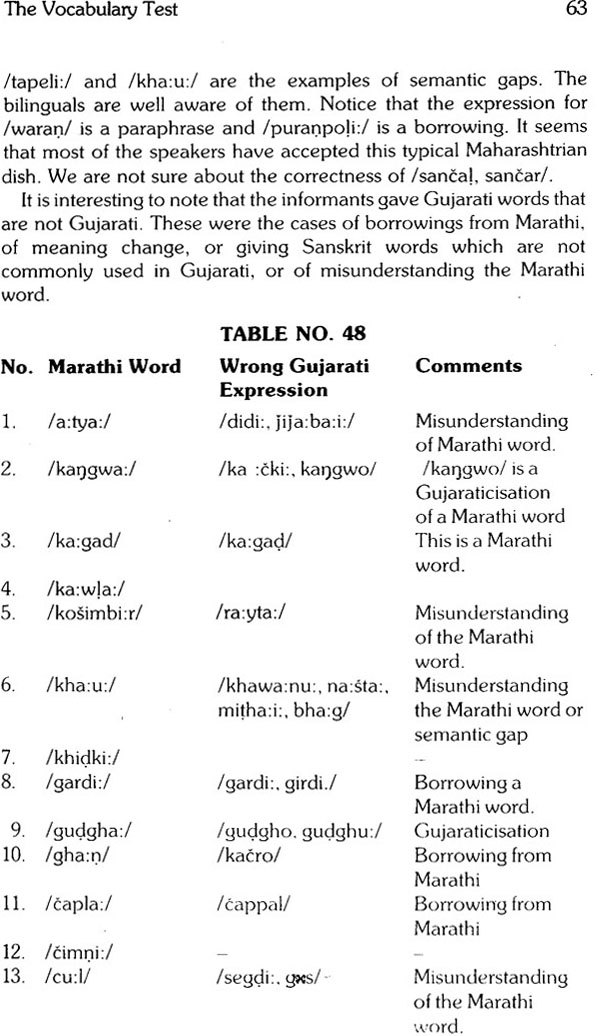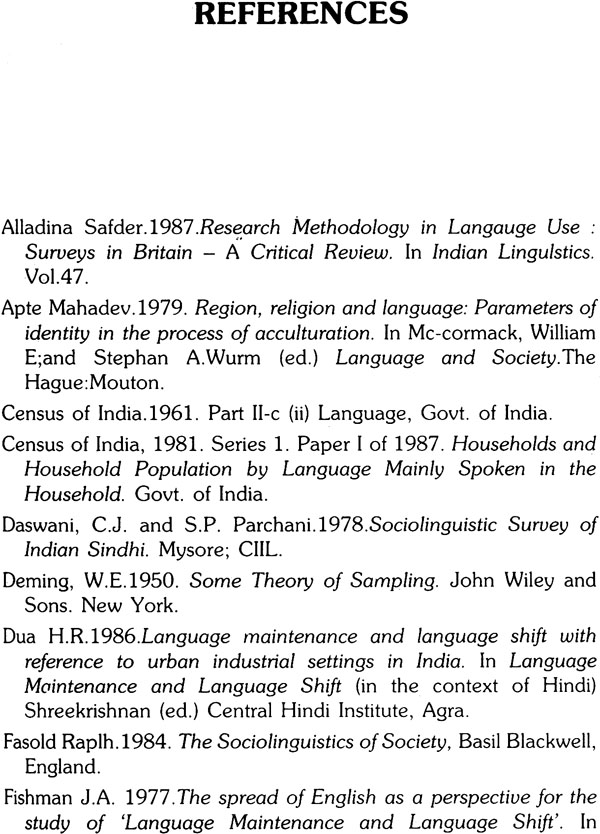
Minority Language Communities: Islands or Icebergs? (An Old and Rare Book)
Book Specification
| Item Code: | NAM131 |
| Author: | R.V. Dhongde, S.R. Sharma and Krupa Kulkarni |
| Publisher: | Deccan College Postgraduate and Research Institute |
| Language: | English |
| Edition: | 1989 |
| Pages: | 160 |
| Cover: | Paperback |
| Other Details | 8.5 inch x 5.5 inch |
| Weight | 200 gm |
Book Description
I am glad to present this monograph on the minority languages prepared by the members of the staff of the Department of Linguistics of the Institute. The project took two years for the collection of data and one year for analysis. I hope the finding of this work will be useful to linguists as well as to those who are working in the field of education, literacy, social change, and culture, I hope the department of Linguistics will work more in the field of Socio-Linguistics.
It is heartening that present monograph is being published on the occasion of the Golden Jubilee of the Institue.
The project ‘Gujarati Speakers in Pune’ was launched in April 1985. A questionnaire (cf. Appendix A) was prepared in Marathi. The information sought can be grouped in the following way:
i Personal details: Age, Sex, Education, Family, Stay in Pune, Year in which the first member of the family came to Pune etc.
ii Acquisition of Gujarati and its use n the family and outside.
iii Learning of Marathi: Its use. The four skills. Interaction with the Marathi speakers in Pune. Understanding Marathi in different fields-practical, social and aesthetic.
iv Attitude of the Marathi speaking community towards their Marathi and that of the Gujarati speaking community in Gujarat towards their Gujarati.
v Attitude of the speakers towards Marathi. Their willingness to accept Marathi language and Marathi persons in the family. Their attitude towards the Gujarati speakers in Pune.
vi Use of other languages in communication.
vii Testing forty vocabulary items in Marathi that belong to different semantic fields and have different degrees of cultural association.
The information were selected taking into account the following variables:
I. Age: The range is from 11 years to 100. The oldest male informant was born in 1897 and the oldest female informant was also born in 1897. The youngest male informant was born in 1971 and the youngest female informant was also born in 1971. The following table will show the age-wise spread: (1986 is taken as the cutting year for counting age 1m, 1f etc. refer to the informants).
| Age | Male | Female |
| 11-20 | 10 | 37 |
| 21-30 | (No. 1m to 10m 18) | (No. 1f to 37f 42) |
| 31-40 | (No. 11m to 28m 24) | (No. 38f to 79f 56) |
| 41-50 | (No. 29m to 52m 29) | (No. 80 to 135f 28) |
| 51-60 | (No. 53m to 81m 24) | (No. 136f to 163f 21) |
| 61-70 | (No. 82m to 105m 5) | (No. 164f to 184f 8) |
| 70above | (No. 106m to 110m 8) | (No. 185f to 192f 5) |
| Total | (No. 111m to 118m 118) | (No. 193f to 197f 197) |
II. SEX: 197 women and 118 men were interviewed.
III. AREA: The informants stay and/or work in different areas of old Pune City such as Shanivar Peth, Rasta Peth, Laxmi Road, Sadashiv Peth, Shukravar peth, Bhavani Peth and Budhavar peth or in the newly developed areas such as Deccan Gymkhana, Shivaji Nagar, Erandawane, kothrud, Satara Road, Poona University, and Poona Cantonment.
IV. Economic Class: The men have their shops or business and a few are employed. They belong to the middle, the higher middle or the rich class.
V. Generation: If the family is taken as a unit the range of generations that have lived in pune varies from fourth to first generation. That is the first migrants are either the speakers themselves or at the most their great grandfathers. We have excluded those who are staying in Pune temporarily for the sake of jobs, education etc.
The census report of 1961 gives the total number of speakers of Marathi as the language in Maharashtra as 30,233,034 (15,371,790 males and 14,861,244 females). The total number of speakers of Gujarati as the first language in Maharashtra is given as 1,067,509 (581,682 males and 485,827 females). That is the proportion of Marathi speakers to Gujarti speakers was 28:1 in Maharashtra in 1961. Out of these Gujarati speakers, 523,156 (329,597 males and 193,559 females) are stated to be bilinguals. That is, roughly only 50.0 per cent Gujarati speakers in Maharashtra are stated to be bilinguals. Among these Gujarati speaking bilinguals in Maharashtra 132,886 (76,300 males and 56,586 females) are said to be using Marathi as the second language. That is 12.4 per cent of the Gujarati speakers in Maharashtra knew Marathi in 1961.
The census data of 1961 tells us that number of speakers of Marathi in Pune district in 1961 was 2,096,736 as opposed to the number of speakers of Gujarati which was 36,983. That is the proportion of Marathi speakers to Gujarati speakers in Pune district was 56:1.
There are no exact figures of speakers of Marathi and Gujarati in Pune city available at present. The Time of India Directory and Yearbook of 1984 gives 1,686,109 as the total population of the pune city. Manorama yearbbok of 1982 gives 4162284 as the total population of pune district for 1981. Assuming that 1961 population ratio has not much changed, we can make a guess that there are about 30,000 Gujarati speakers in Pune. Again, taking into account the Manorama figure, we can guess that the number of Gujarati speakers in Pune district may be about 74,327. Our sample consists of 316 informants. That is, our sample shows roughly the proportion as 1:100.
The Census of 1981 gives the following figures: Number of persons speaking Marathi at home in the Pune urban area is 1,365,300. The number of persons speaking Gujarati at home in the Pune urban area is 43,103. That is for every 100 speakers of Marathi, there are 3 speakers of Gujarati. Our sample consists of 316 informants. The census does not specify whether Pune urban area includes only Pune City or Pune city and its suburbs. But even if we take the figure of Gujarati speakers to be 43,103 the proportion of our sample would be 0.7:100.
| 1 | | 1-78 |
| I | Introduction | 3 |
| II | Acquisition of the Four Language Skills in Marathi | 11 |
| III | Attitude of the Dominant Language Group towards the Minority Group | 17 |
| IV | Attitude of the First Language Community towards the Bilinguals | 19 |
| V | Attitude of the Minority Group towards the Dominant Language | 23 |
| VI | Dominant Language and the Functional Needs | 39 |
| VII | Minority Language and the Functional Needs | 51 |
| VIII | The Vocabulary Test | 57 |
| Appendix A: | Questionnaire | 67 |
| References | 77 | |
| 2 | | 79-150 |
| Introduction | 81 | |
| Section 1 | Acquisition of Language Skills | 93 |
| Section 2 | Attitudes | 111 |
| Section 3 | Problems | 131 |
| Section 4 | The Vocabulary Test | 135 |
| Observations | 143 | |
| Notes | 145 | |
| References | 149 |













